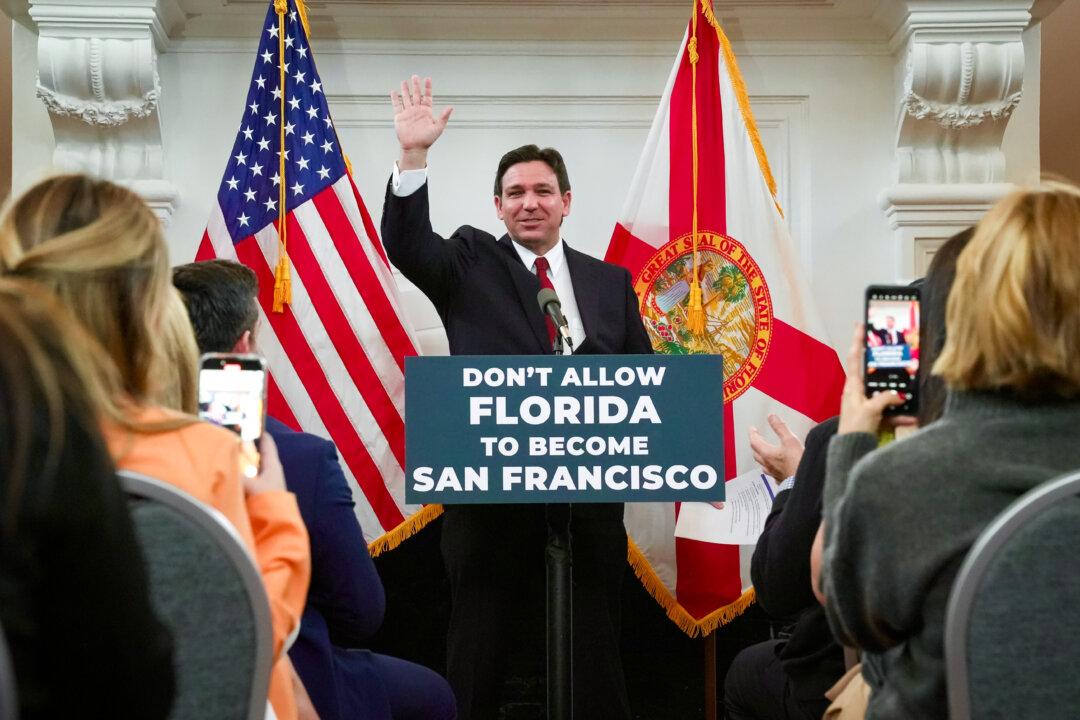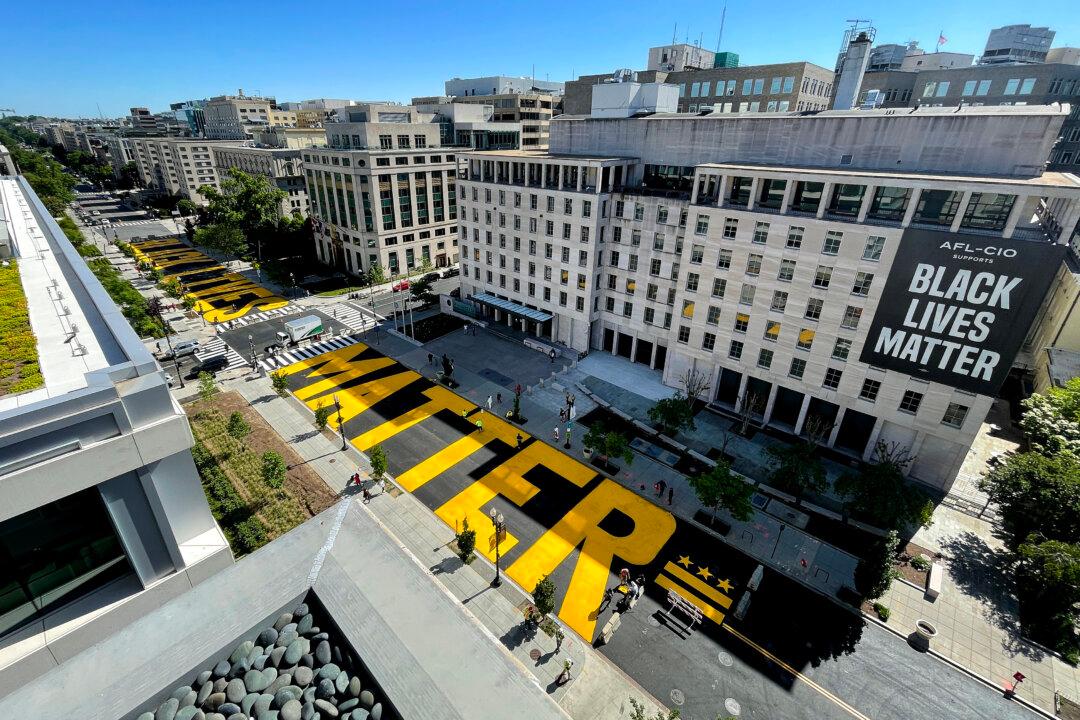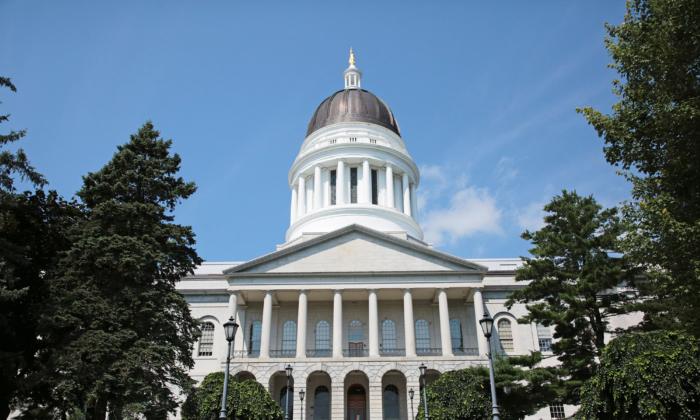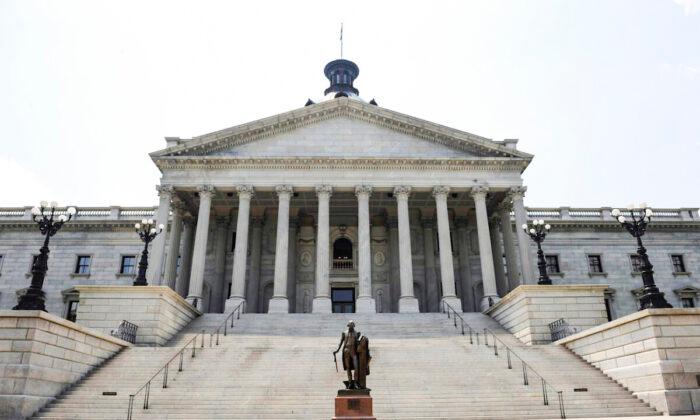Modern currencies such as Bitcoin expect to find success in a more technological world, but a new currency known as Goldbacks might corner the post-apocalyptic currency market.
Cordon had previously worked for years trying to make gold into functional money, but the dream gave him a new idea: What if a bill small enough to buy groceries could include a tiny percentage of gold?
“This felt like an epiphany because I saw people using gold as a regular money,” he said. “This fit into the vision that anyone anywhere could use gold as their currency of choice.”
For thousands of years, anyone who wanted to buy goods with gold faced “the small coin problem,” Cordon told The Epoch Times. A 1-ounce gold coin, worth about $2,000, is far too expensive for everyday use, but a cheap gold coin is impractically small.
“Gold is the best money, but it can’t buy a loaf of bread,” he said.
Be Prepared
At a time when Bitcoin has devoured most of the private and local currency market, Goldbacks have arrived late to the private currency world.In the 1980s and ‘90s, private currencies experienced a boom around the United States, according to University of Central Oklahoma professor and local currency expert Loren Gatch. But since then, they’ve been on the decline.
“That’s something which [has] pretty much gone downhill in the last couple decades,” Gatch said.
But even amid a private currency decline, Goldback has $20 million of bills in circulation, according to Cordon.
They’re recognized as legal tender in Utah and Wyoming and are legal for use in New Hampshire, Nevada, and South Dakota.
This number puts Goldbacks at the top end of what private currencies have ever achieved.

“It’s totally off the scale,” Gatch said. “$20 million is far greater than what I think any of the experiments that I’m familiar with—in the last quarter-century—have ever tried to do.”
Gatch said the idea of filling bills with gold seems like a gimmick. Gold-backed currencies already work when the gold is in a vault, and people still must trust the banker at some point.
“You’re basically not getting away from the problem of public credibility if you issue these currencies that claim to have a little bit of gold in it,” he said. “They could be gold, it could be something else. You have to establish the public’s confidence in it.”
But a post-apocalyptic setting might make the gold inside the bills more valuable, according to Gatch. If all of society were to collapse, it would be better to have gold in hand than in a bank vault somewhere.
Even so, Gatch doubted that people would need gold money after a societal collapse.
Apocalypse Money
If society collapses, Goldbacks are made of something that has remained valuable throughout human history, Cordon said.“You can barter with gold just about anywhere in the world. And that’s part of why people buy gold,” he said. “If it’s the apocalypse, if our electrical grid goes down, you don’t want Bitcoin or dollars.”
Goldback director of sales and marketing Kevan Mills speculates that the dollar’s collapse into worthlessness grows closer every day. Studies show that no fiat currency has lasted for more than four generations.
“We are just getting towards the end of the second generation, if we’re counting from when [President Richard] Nixon canceled the gold standard to now,” he said.

For now, it seems that Goldback is betting that such a collapse isn’t imminent. People can exchange dollars for Goldbacks, according to Mills. He noted that there’s value in owning a diverse pool of assets.
“It also makes sense to have some assets and precious metal, just in case,” he said.
For Cordon, who is a Mormon, preparedness is an article of faith. The Mormon church teaches that believers should have a three-month supply of food in their homes in case of disaster.
Whatever their motives, most Goldbacks users appreciate the freedom, beauty, and security that gold offers, Cordon said. People from all political affiliations and walks of life want the new currency.
“It’s really anybody that loves liberty,” he said. “I think the reason why gold has been money for thousands of years is that it’s just really beautiful.”

Gold in Hand
According to Mills, Goldbacks practically advertise themselves as they spread through transactions. People are eager to use a currency when they know it’s gold.“This is the first company I’ve ever worked with where the product sells itself,” Mills said. “In 25 years of marketing, I’ve never been involved with a product where consistently in board meetings and executive meetings we’re saying, ‘What do we do to slow demand?’”
Today, more than 200 Utah businesses advertise that they take Goldbacks. But for at least seven of those businesses, receiving Goldbacks from customers has mostly been a theoretical transaction. Only one of those business owners said he receives Goldbacks on a consistent basis.
Skyler McCallson, owner of Utah’s Wok the Line restaurant, said Mills asked him to sign up as a business that accepts Goldbacks.
“We probably see maybe 2 percent to 3 percent of our sales in Goldbacks,” McCallson said. “But you know, that’s 2 percent to 3 percent of sales we weren’t normally seeing, so we'll take it.”
He said he keeps the Goldbacks he gets paid.

The rest of the contacted businesses say they’ve seen only one purchase in Goldbacks. Often, the purchaser was a representative from Goldback.
Paul Mooney, owner of Utah’s Alien IT Services, has yet to receive a single purchase in Goldbacks, although he said he would accept them on principle.
“You never know. I don’t know,” Mooney said. “I just have to see if anybody wants to go that route.”
One real estate business owner said that he has agreed in theory to accept Goldbacks in payment for a house, but has never had anyone offer them to him for that purpose. However, the bills are a common sight in his community.
“I have seen them used even in garage sales,” he said.
In just a week, Mills said he paid a landscaper, grass seeder, and shed builder in Goldbacks for their services. Although none of these businesses had received Goldbacks before, they quickly accepted them.
“It’s happened hundreds of times where a fiat currency can hyperinflate and lose all of its value,” Cordon said.

But the Goldback is valuable because of its gold, making it “commodity money.”
Business owners can rest assured that their Goldbacks are secure for several reasons, according to Cordon.
In the eternal race between counterfeiters and currency-makers, the advanced technology used to make Goldbacks gives the currency a 15-year head start, he said.
“You’re looking at about $10 million worth of equipment before you can counterfeit a Goldback. And you’re looking at about 10 years of expertise,” he said.
All in the Name
No matter their suitability for the apocalypse, Goldbacks face their biggest threat from the federal government.If private currencies too closely resemble U.S. currency, the federal government will prosecute its creators for counterfeiting.
Unlike traditional counterfeiters, Von NotHaus was open about the money he manufactured, which didn’t resemble any bill or coin currently in circulation. But he used the word “dollar” and the phrase “Trust in God” on his coins. To the government, this constituted counterfeiting.
Von NotHaus was also rampantly anti-government, according to Gatch. His company’s original name was the National Organization for the Repeal of the Federal Reserve Act and the Internal Revenue Code.
“What you cannot do is pretend that your currency is U.S. dollars,” Gatch said. “Then that’s where the government gets mad at you.”
Cordon said his company has learned from the fate of the Liberty Dollar. He designed Goldbacks to be impossible to mistake for dollars. The bills feature lengthwise images, no dollar signs, and Bible verses that don’t appear on dollars.
“We don’t want anybody thinking Goldbacks are dollars,” he said. “Their value is higher than dollars.”




